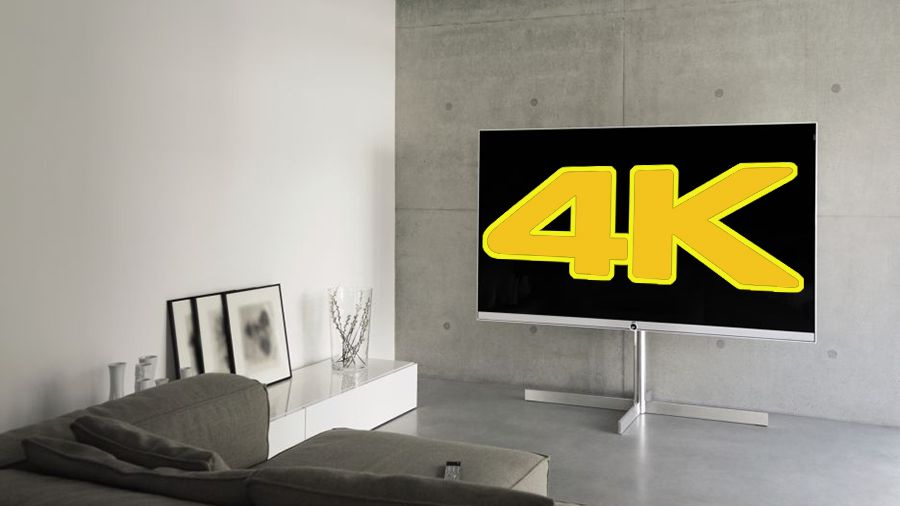T3 explains: Quad HD vs QHD vs 4K Ultra HD
Screen tech made simple


Display technology can be difficult to understand at the best of times but if you're buying a brand new bit of kit (or just wondering how yours stacks up against the neighbours') then it's important to know what terms like Quad HD, QHD and 4K Ultra HD actually mean.
That's why we've brought you this straightforward guide: it covers all the key definitions for screens and applies across televisions, tablets, monitors, laptops and phones, so you know exactly what you're talking about when comparing and shopping for devices.
Bear in mind manufacturers and retailers aren't compelled to use the same wording as everyone else, so you might see some discrepancies or terms not always being used correctly. However, for the most part these labels will be used as we've described below.
What are qHD and QHD?

That the same acronym can be used for two resolutions sums up how confusing display tech can be sometimes. The original qHD (lower case q) term meant quarter High Definition, a resolution of 960 x 540 pixels, but it's no longer commonly found on devices.
The other QHD stands for Quad High Definition and is four times the size of the old 720p (1280 x 720 pixel) standard: a resolution of 2560 x 1440 pixels. Many top-end phones use QHD screens though in the TV and monitor market the 4K standard is now taking over.
QHD is sometimes called 2K or WQHD (due to its widescreen dimensions), but these terms can be used interchangeably. Of course the actual displays can be any size, from 5 inches to 55 inches, but the number of pixels (3,686,400 of them) always remains the same.
What are 4K and Ultra HD?

Technically, 4K is a resolution of 4096 x 2160 pixels (hence the 4K), but that format tends to be only used in relation to movie recording and broadcasts. As far as consumers go, when you see a 4K sticker it almost always means a screen resolution of 3840 x 2160 pixels.
Get all the latest news, reviews, deals and buying guides on gorgeous tech, home and active products from the T3 experts
So 4K is actually used to describe two different formats, but Ultra High Definition (written as Ultra HD or UHD) is always 3840 x 2160 pixels. Manufacturers will often use 4K and UHD interchangeably or even together when coming up with their product descriptions.
Muddying the waters further is Ultra HD Premium, which basically means a certain set of agreed standards around colours, contrast and other specifications, but even here the resolution is still the same 3840 x 2160 (that's four times the size of 1920 x 1080 Full HD).
What display tech do I need?

While a QHD screen is sharper than an HD one on a phone with the same screen size, 1080p phone screens are still more than adequate for many users. At such small sizes the difference isn't huge, which is why we haven't really seen many 4K/UHD phones so far.
For television sets, there is a marked improvement when you jump up to 4K/UHD, but only on screens that are 65 inches in size or higher, so that's worth considering when you're out shopping. There's a growing amount of 4K content available and much more will follow.
It's certainly worth getting a future-proofed 4K TV at the moment - and most new sets are now 4K-ready - but as far as phones go it's not a specification you need to worry so much about. After all, the 4.7-inch iPhone 6S makes do with a resolution of 1334 x 750 pixels.
What comes next?

Although you can get 4K in a phone in the form of the Sony Z5 Premium it seems unlikely that handsets will evolve beyond QHD anytime soon: not only is it difficult to spot the increased quality, a 4K display also makes more demands on the battery life of a phone.
As for televisions, expect the numbers to keep rising. We've actually seen the first 8K TV sets appear in Japan with resolutions of 7680 x 4320 pixels, though it's going to be a good few years before these sets are widespread, so 4K is safe for the foreseeable future.
Don't forget content goes hand-in-hand with specs: most phones are just getting 4K video recording, while the standard becomes more prevalent across YouTube, Netflix and other sites. 8K broadcasts, meanwhile, are expected to be trialled at the 2020 Tokyo Olympics.
- Our pick of the best TVs to buy today
Dave has over 20 years' experience in the tech journalism industry, covering hardware and software across mobile, computing, smart home, home entertainment, wearables, gaming and the web – you can find his writing online, in print, and even in the occasional scientific paper, across major tech titles like T3, TechRadar, Gizmodo and Wired. Outside of work, he enjoys long walks in the countryside, skiing down mountains, watching football matches (as long as his team is winning) and keeping up with the latest movies.
